Case Method 100 Years
From the publication of the first case in 1921 to teaching the case method online during the 2020 pandemic, we’re marking the centennial of the case method in 2021 with these milestones, while looking forward to continued innovation, expansion, and inclusion.
1921
Putting yourself in the shoes of the case protagonist and working to determine what should be done is like a good detective story. Professor Jan Rivkin explores General Shoe Company, the first Harvard Business School case study, how the case method came to be at the School, and why it’s still relevant nearly a century later.
The First Case: General Shoe Company
The first standalone case, “General Shoe Company,” by Clinton P. Biddle is published by the Bureau of Business Research.
May 10,1922
The Case System Named
Faculty vote that the School’s plan of instruction should be called the case system.
1922
Universities Adopt HBS Casebooks
One or more of the first five HBS casebooks have been adopted at 93 universities, signaling increasing popularity of discussion-based teaching in business education.
1922
Case Research Funded at General Electric
General Electric pays for HBS to research cases at GE, demonstrating the connection between the School and industry.
1923
Case Method Catches On
Two-thirds of the School’s courses are now taught by the case method.
1925
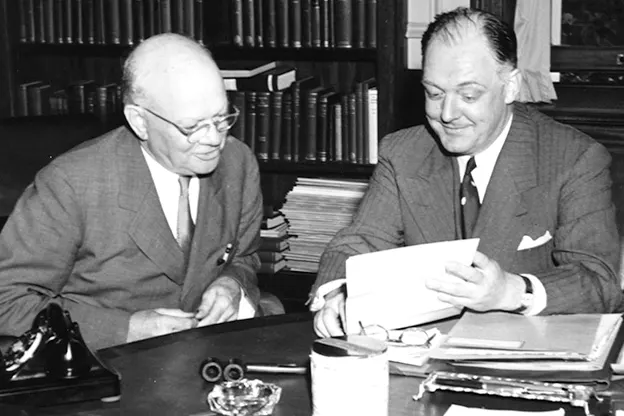
Business Schools Debate Use of the Case Method
Members at the American Collegiate Schools of Business (ACSB), now the Association to Advance Collegiate Schools of Business (AACSB) convention debate use of the case method, now in use by 217 schools in U.S. Future HBS Dean, Professor Donald K. David, speaks in favor of it.
1937
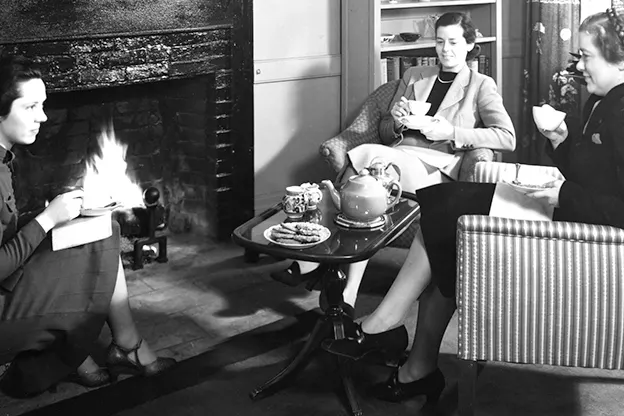
Teaching by the Case Method at Radcliffe
HBS assists Radcliffe College with the new “Training Course in Personnel Administration” using the case method for teaching.
1939
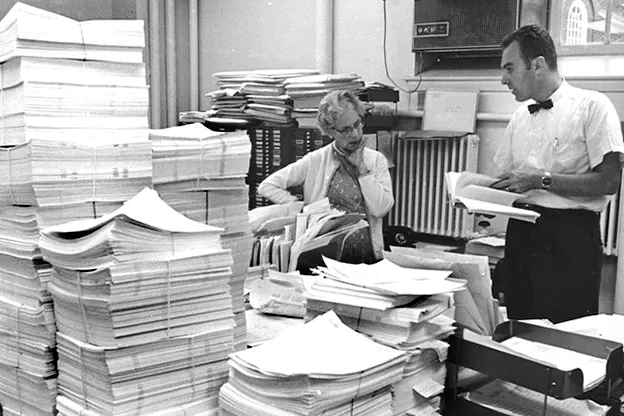
15K Cases Produced in 18 Years
In the 18 years since the case method’s inception, nearly 15,000 cases have been produced.
1941
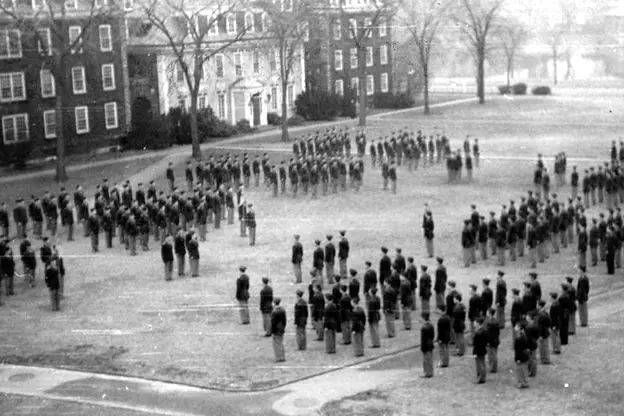
Case Method Flexibility Allows for Transition to Wartime Curriculum
As the US enters WWII, the MBA Program is paused and the transition to Wartime Schools begins with the creation of the Navy Support School. Dean Donham writes that the flexibility of the case method has allowed the "successful conversion of our curriculum to war conditions."
1943
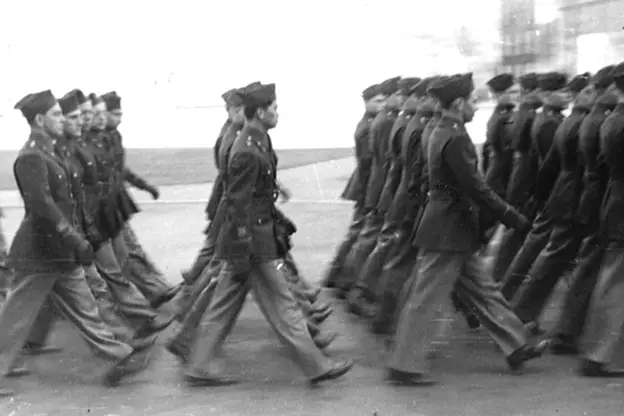
600 Cases Written for Military
Faculty writes 600 cases for classroom instruction of military personnel
1946 to 1947

Industrial Films Introduced in the Classroom
HBS introduces the use of industrial films into case teaching.
1951
Task Force Created for Case Writers
The Central Task Force for training case writers is created.
1953
Office of Case Development Established
The Office of Case Development is established to assume responsibility for all case research activities at HBS. A Case Development Policy Committee of the Faculty, and a Director of Case Development, are appointed.
June 11,1953
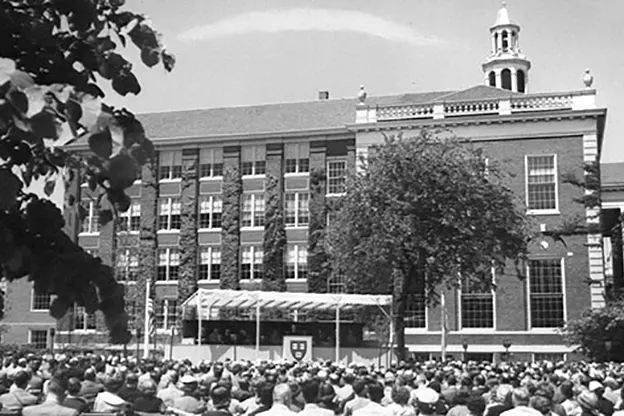
Aldrich Hall Dedicated
The School’s new classroom building, Aldrich, is dedicated. Classrooms are specifically designed for teaching by the case method.
1954
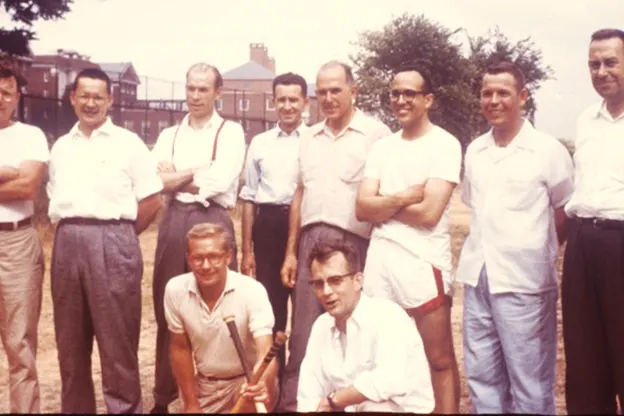
Summer Case Writing Programs Begins
With Ford Foundation funding, HBS begins to conduct the Summer Case Writing Program, which encourages professors from other universities and colleges to learn more about the case method and to contribute information about their own cases.
1954
The Case Method Goes Global
With Ford Foundation funding, HBS enters into its first formal overseas relationship with the Institute of Business Administration at the University of Istanbul, Turkey.
1955

Number of Cases and Collections in Print Grows
There are now 21 case collections in print as well as 50,000 individual cases.
1956
Annual Goal Set for Case Writing
School sets target of having one-third of faculty engaged in case development or project research each year.
1957
Groundbreaking Case Series on Swiss Watch Industry
While teaching at IMEDE, Kenneth Andrews conducts research into secretive Swiss watch industry and then writes about it in a groundbreaking case series.
1957
The HBS Division of Audio-Visual Education starts to produce "filmed cases" in 1957.
Cases Jump from Paper to Screen
Division of Audio-Visual Education starts to produce "filmed cases".
1957
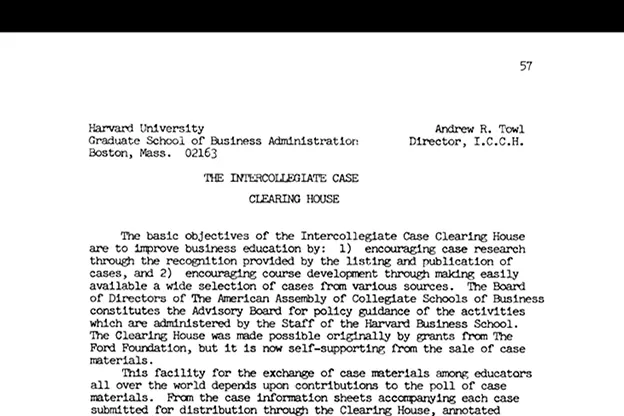
Intercollegiate Clearing House for the Distribution of Cases Developed
Ford Foundation gives $120,000 to help support development of an Intercollegiate Clearing House for the distribution of cases, through which cases developed at HBS and other schools were cleared for use in any school.
1957
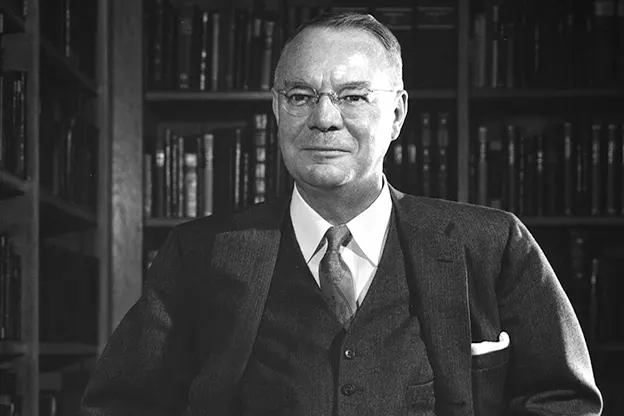
First Directory of Cases Published with 32 Business Schools
The first director of case distribution, Harvey Bishop, coordinates case distribution across multiple schools of business, and the first directory of cases is published, including 32 schools.
1958
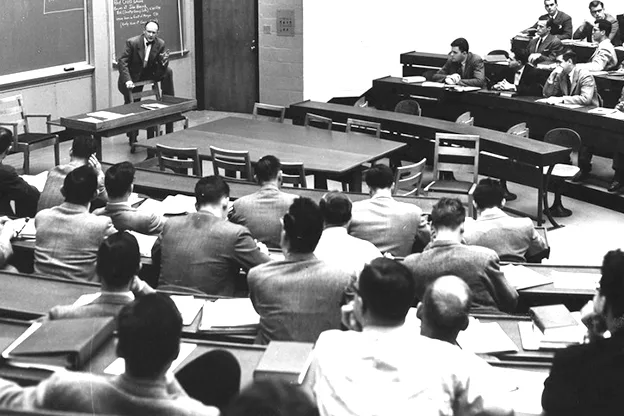
Learning to Teach by the Case Method
International Teachers Program begins, enrolling teachers from around the globe to learn teaching by the case method.
1959
Intercollegiate Case Bibliography Volume IV Published
Volume IV of the Intercollegiate Case Bibliography published. It contained 710 cases from 63 institutions and a supplement of 242 cases in languages other than English.
1960 to 1961
Experimenting with Case Discussion Simulator
School experiments with the Individual Case Discussion Simulator (INCADIS) to determine whether the case method could be adapted for use with individuals who could not travel to campus.
1962 to 1963
Stimulating Global Case Development
The Division of International Activities established. One goal is to “stimulate the collection of case materials and project research in various parts of the world.”
1963
Case Clearing House Sells Enough to Break Even
Intercollegiate Case Clearing House sells $107,000 worth of mimeographed cases, approaching break-even point.
1963
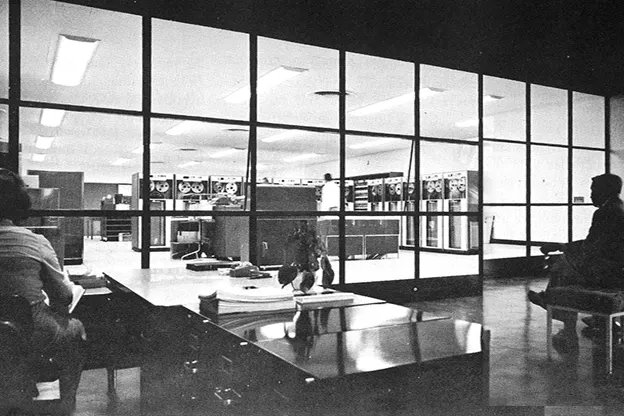
Dynamic Case Series Introduced
First-year students participate in first run of the "Business Game," a dynamic case series created by Professor James McKenney.
1964
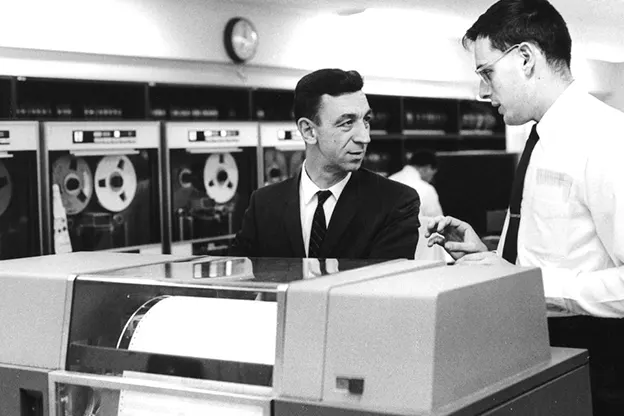
Case Method Enters Digital Era
The first computer at HBS, an IBM 1401, is installed on campus. Part of the computer’s purpose is supporting “business games,” a new facet of case teaching.
1964 to 1965
Ford Foundation Grant Supports Case Materials in Developing Countries
HBS receives a grant of $170,000 from the Ford Foundation to support the preparation of a series of bibliographies of cases and other teaching materials for use in developing countries overseas.
1965
First Use of “Tele-Case Discussions”
“Tele-Case Discussions” concept was used successfully for the first time to present a series of eight seminars on “Personnel Appraisal.” These seminars were part of the Alumni Association’s continuing education program.
1965 to 1966
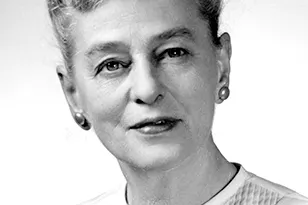
Prolific Case Author Ruth Hetherston Retires
Ruth Cummings Hetherston, Associate in Research, retired after 37 years at HBS. She began her career at HBS as a grader becoming one of the School’s most prolific developers of cases and teaching materials.
1967
Ford Foundation Supports Case Method Teachers
The International Teachers Program receives $1.2 million from the Ford Foundation to support training of case method teachers.
1968
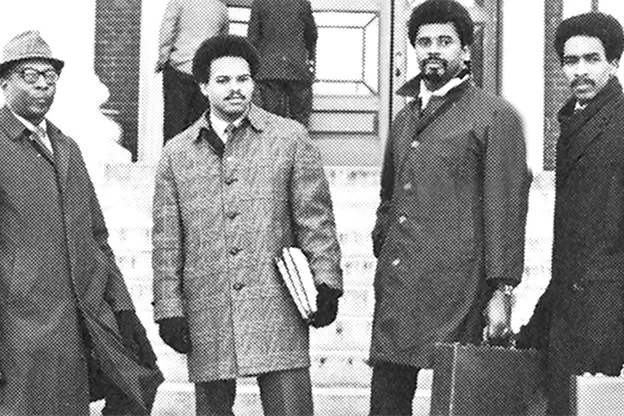
AASU Founded with Call for More Black Case Protagonists
African-American Student Union is founded with one of its goals to increase the number of cases featuring Black businesspeople.
1968
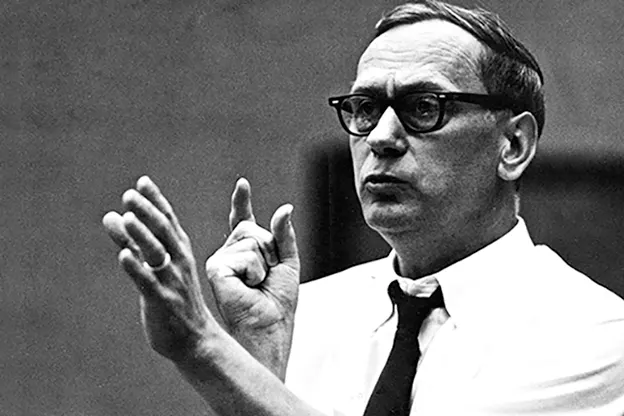
Doctoral Students Introduced to Case Method Teaching
C. Roland Christensen initiates a series of annual seminars for doctoral students on case method teaching.
1978
Cases Grouped in Course Modules
Groups of related cases with a teaching guide called course modules are introduced to help structure segments of courses.
1980
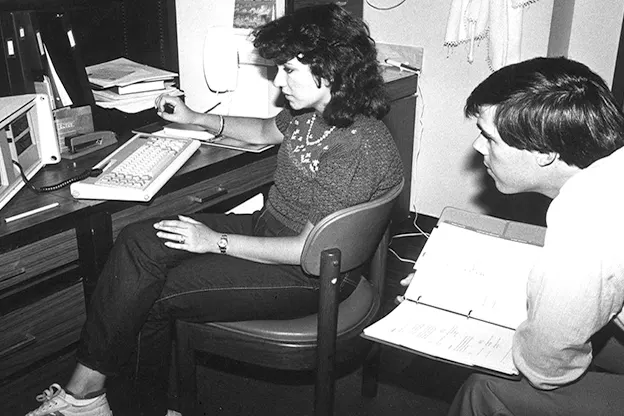
Using Personal Computers to Analyze Case Materials
Two 1st-year sections participate in experiment with the use of personal computers to analyze case materials.
1981
Case Publishing Shifts to Computer Fulfillment
The internal case-publishing enterprise, which in 1980-1981 shipped 100 million pages to 6,000 customers around the world, but lost money, shifts to computer-based fulfillment.
1982
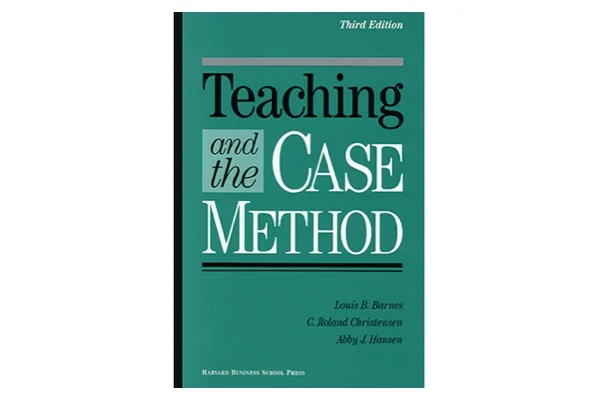
Teaching by the Case Method Published
Teaching by the Case Method by C. Roland Christensen is published.
1984
Christensen Named University Professor
C. Roland Christensen is named a University Professor, Harvard's highest academic honor, in recognition of his work promoting the case method throughout Harvard.
1991
Work Begins to Put 7K Active Cases Online
HBS and Xerox begin multi-year effort, headed by Director of Cases Judy Uhl, to put the School's 7,000 active cases online.
1993

Harvard Business School Publishing Created
HBS Publishing is created as wholly-owned subsidiary of Harvard University.
1995
First Multi-media Case on Pacific Dunlop
First multimedia case, on Beijing-based sock manufacturer Pacific Dunlop, released, featuring video of the case protagonist and interactive exhibits.
1995
Educational Technology Group Founded
Educational Technology Group founded to facilitate production of additional multi-media cases.
1997
California Research Center Established
California Research Center established to support faculty research and writing on West Coast companies.
1997
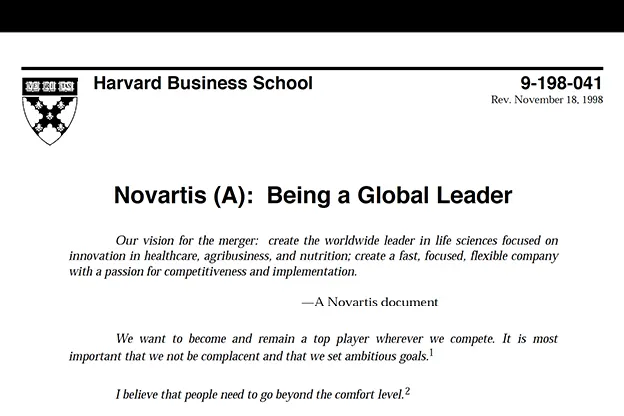
Executive Education Establishes Research & Development Group
This first group of so-called “pooled” case writers supported faculty teaching and innovation, including in the then-nascent custom programs and for early experiments with online learning, such as the “distance learning modules” in the Program for Global Leadership. Novartis was one of the first big custom programs, and the “Novartis: Being a Global Leader” case was the first by Dean Srikant Datar.
1998
Early attempts to diversify case protagonists received a lot of press. A special fund was created by Marjorie Alfus, a retired Kmart executive; the Committee of 200 (C200), a national organization of women business executives; and HBS to encourage women to pursue high-level careers in management and to identify women who are key decision-makers and asking them to serve as subjects in HBS case studies.
1999
Research & Development Focuses on International Cases
The Research & Development Group becomes the Global Research Group, extending its case writing support to the faculty across all academic programs, focusing on international cases.
2004
Christensen Center Founded
The C. Roland Christensen Center for Teaching and Learning founded to promote and support case method teaching and participant-centered learning for HBS faculty and instructors at institutions around the world.
2008
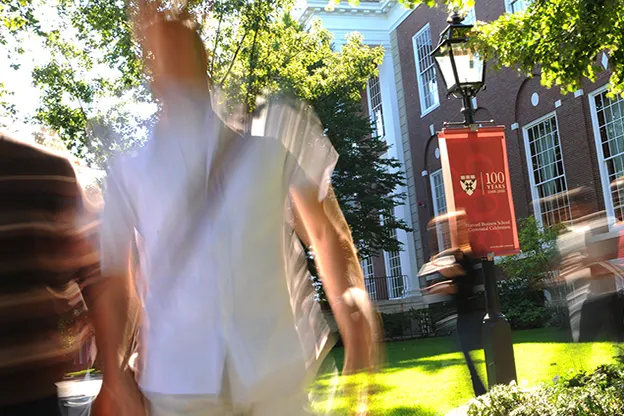
HBS Turns 100 and Looks to the Future of the Case Method
As part of the School's centennial celebration, six cases developed to spur discussion on future of management education.
2010
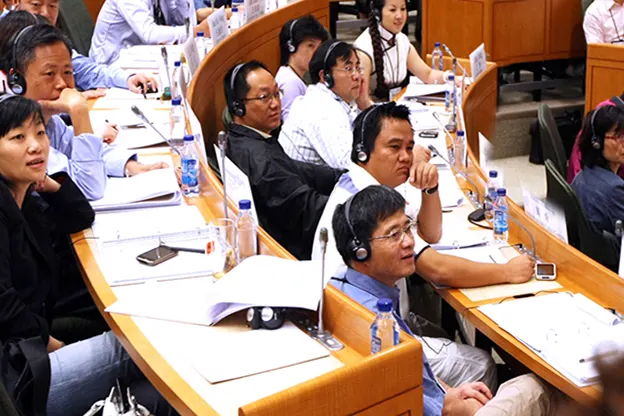
Shanghai Center Opens
Harvard Center Shanghai (HSC) opens a 90 seat HBS classroom for case method teaching; the space features equipment for simultaneous translation to allow instruction in English for Chinese-speaking participants.
2013

HBX (now HBS Online) founded with goal of replicating dynamic, participant-centered learning experience of in-person HBS classrooms.
2013
Global Research Group Becomes Case Research & Writing Group (CRG)
In August 2013, with the overseas offices firmly established, the Global Research Group adopts the new name of Case Research & Writing Group (CRG). Its mission remains to support faculty by providing high quality, high value, efficient, and innovative case research, development, and writing. The CRG has worked with over 240 faculty members on 2,600 projects across all academic units at the School.
2015
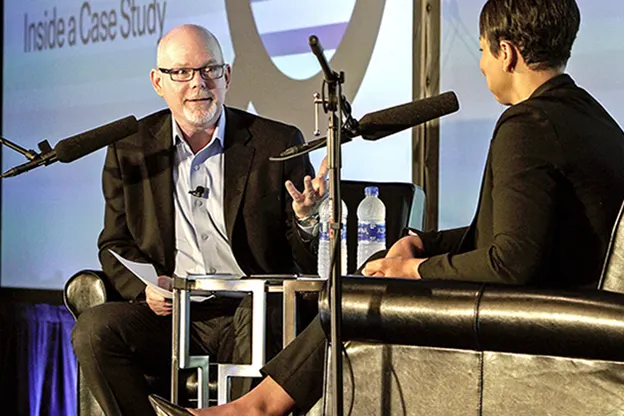
Cold Call podcast created, each episode features a case and an interview with the faculty author.
2019
Collection of Cases Featuring Women Developed
Cases with Female Protagonists collection developed in partnership with the Gender Initiative.
2020
Racial Equity Plan Calls for More Black Protagonists in Case Studies
Advancing Racial Equity plan includes goal of developing more cases with Black and other under-represented minority protagonists.
2020
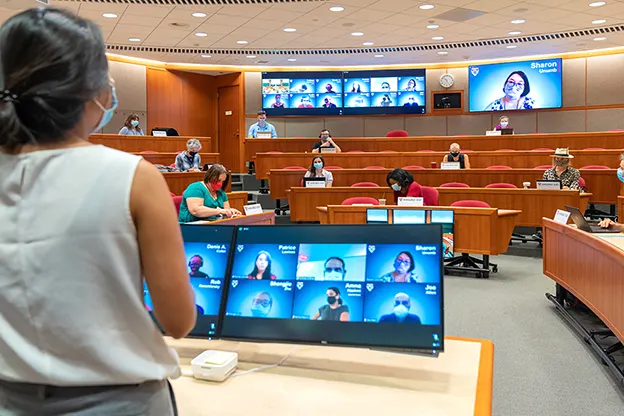
Bringing the Case Method Online During COVID-19 Pandemic
HBS develops a hybrid classroom model to maintain teaching and learning by the case method during a global pandemic.
2021
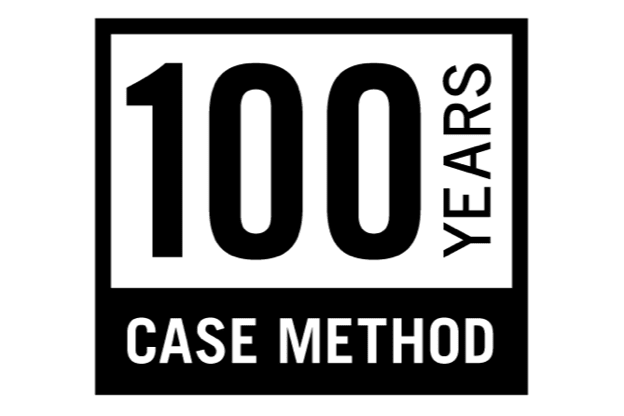
Celebrating 100 Years of the Case Method
During the 2021-2022 academic year, HBS celebrates 100 years of teaching and learning by the case method at the School.